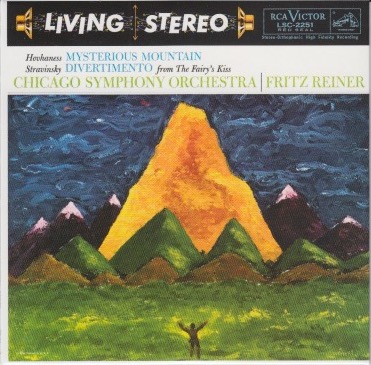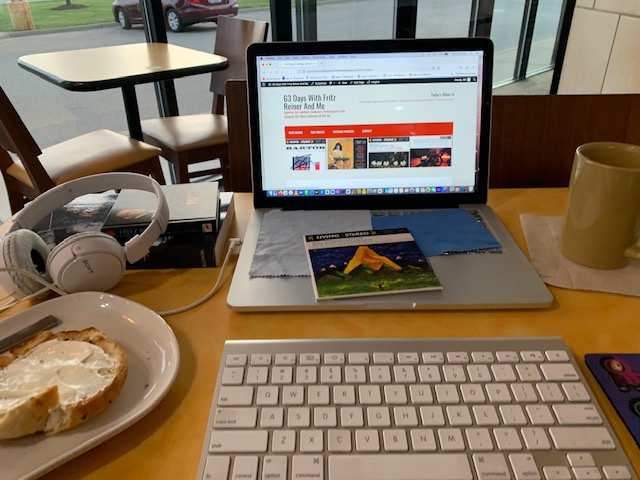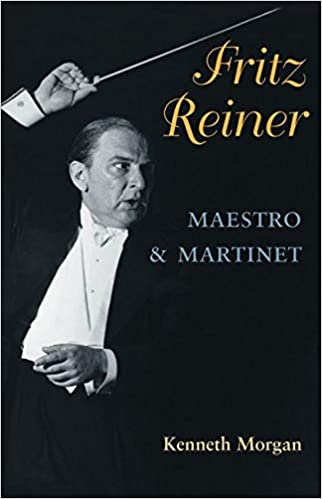
This morning’s listening fare is a composer of whom I’d never heard until now: Hovhaness, which I discovered to be Alan Hovhaness (1911-2000). His official web site can be found here.
I wish I could contain my enthusiasm about Mysterious Mountain, Symphony No. 2, Op. 132, and save it for “The Subjective Stuff” section below.
Alas.
This is the music of pure imagination – magical, emotional, and spiritually uplifting. I looked on YouTube for more from the late composer and found a whole bunch of compositions, under which people gushed about how moving and beautiful his music is.
After the craptastic journey to Spain I took yesterday, today’s music is an unexpected joy. This is why I do these musical projects: to discover new composers, musicians, and recordings.
Sometimes, my discoveries are what I call “links-to-links” adventures; that is, one thing I discover will – thanks to the Internet – lead to me discovering several other things.
For example, on Day 17, I was listening to Tchaikovsky’s Violin Concerto in D major. I wrote this:
In this case, I discovered Tchaikovsky’s Piano Concerto was featured in a 1947 movie called Carnegie Hall that also features – get this – Fritz Reiner, Jascha Heifetz, Arthur Rubinstein, Lily Pons, and a host of other Classical musicians who belong on Mt. Olympus.
(By the way, quoting myself is kind of metta.)
That discovery lead me to listen to Lily Pons, buy a book about her life, and explore the world of coloratura sopranos.

Which, yesterday, led me to discover the French coloratura soprano Natalie Dessay (1965- ), which thrilled me no end. Especially when I discovered a 33-CD box set of her works was released this year. (I’m a sucker for box sets, especially limited edition, remastered ones.)
Links to links to links…
It’s why I do this.
The Objective Stuff
From his entry on Wikipedia,
Alan Hovhaness (1911-2000) was an American-Armenian composer. He was one of the most prolific 20th-century composers, with his official catalog comprising 67 numbered symphonies (surviving manuscripts indicate over 70) and 434 opus numbers. The true tally is well over 500 surviving works, since many opus numbers comprise two or more distinct works.
The Boston Globe music critic Richard Buell wrote: “Although he has been stereotyped as a self-consciously Armenian composer (rather as Ernest Bloch is seen as a Jewish composer), his output assimilates the music of many cultures. What may be most American about all of it is the way it turns its materials into a kind of exoticism. The atmosphere is hushed, reverential, mystical, nostalgic.”
Hovhaness was interested in music from a very early age. At the age of four, he wrote his first composition, a cantata in the early Italian style inspired by a song of Franz Schubert. His family was concerned about his late-night composing and about the financial future he could possibly have as an artist. He decided for a short time to pursue astronomy, another of his early loves. The fascination of astronomy remained with him through his entire life and composing career, with many works titled after various planets and stars.
Hovhaness’s parents soon supported their son’s precocious composing, and set up his first piano lessons with a neighborhood teacher. Hovhaness continued his piano studies with Adelaide Proctor and then Heinrich Gebhard. By age 14 he decided to devote himself to composition.
During the 1930s and 1940s, Hovhaness famously destroyed many of his early works. He later claimed that he had burned at least 1000 different pieces, a process that took at least two weeks; elsewhere he claimed to have destroyed around 500 scores totaling as many as a thousand pages. n an interview with Richard Howard, he stated that the decision was based primarily on Sessions’ criticism of his works of that period, and that he wanted to make a new start in composition.
Okay. If Hovhaness was “one of the most prolific 20th-century composers,” and his works number in the hundreds, (the Naxos web site page for him says, “Hovhaness wrote 67 symphonies and a wide variety of concertos and other orchestral works. He left an equally vast list of works for chamber ensembles of various kinds”), and his music is so undeniably gorgeous, why haven’t I heard of him before? And where are the box sets of his complete works? Why aren’t there any compilations, remastered recordings, extensive liner notes, books?
From its entry on the Alan Hovhaness web site,
Mysterious Mountain is the title of Hovhaness’s Symphony No.2, the composer’s most celebrated and enduring work, remaining in the repertoire of many major American orchestras for over half a century. Composed in 1955 and premiered by world-renowned conductor Leopold Stokowski, it was first recorded in 1958 for the RCA Victor label by the Chicago Symphony under Fritz Reiner. Eight commercial recordings have been made to date, making it the composer’s most recorded symphonic work. Below are discussed the work’s origins, early critical responses to it and the composer’s own rather surprising comments on Mysterious Mountain. We also survey the available recordings on CD.
In 1955, Leopold Stokowski, who had already conducted the 1942 US premiere of Hovhaness’s Symphony No.1, requested a new work from the composer for his debut appearance with the Houston Symphony — indicating that amongst contemporary composers, Stokowski had a particularly high regard for Hovhaness. Initially Hovhaness provided an opening fanfare entitled To A Mysterious Mountain but Stokowski asked for something more substantial. Hovhaness later despatched the full-blown, three-movement “Symphony No.2”, though it remains unclear just how much of it was already composed. The premiere, broadcast nationwide over NBC radio in October 1955, was an outstanding success for composer and conductor alike.
Symphony No.2’s sub-title does not portray any specific mountain, but “the whole idea of mountains” according to the composer. However, as with many of the composer’s evocative titles, it was appended after the music was written, here on the suggestion by Stokowski to “give it a name”. This was one of the best pieces of advice Hovhaness ever took, given the work’s overwhelming success — possibly attributable in part to its evocative title.
From its entry on Wikipedia,
Symphony No. 2, Op. 132, Mysterious Mountain is a three-movement orchestral composition by the Armenian-American composer Alan Hovhaness. The symphony was commissioned by the conductor Leopold Stokowski and the Houston Symphony, and premiered live on NBC television in October 1955 on the Houston Symphony’s first program with Stokowski as conductor. The first and most popular recording of the work, released in 1958 with the Chicago Symphony Orchestra performing under Fritz Reiner, is often regarded as the foremost performance of the piece. This recording, like early performances of the work, predates the composer’s decision to categorize the work “symphony”. Later on, the G. Schirmer published score was titled Mysterious Mountain with “Symphony No. 2” printed as a subtitle in smaller typeface.
Hovhaness was 44 when he composed Mysterious Mountain. It was recorded on April 28, 1958 at Orchestra Hall, Chicago. Fritz Reiner conducted, and he was about 70 at the time.
On this album, Stravinsky’s Divertimento from “The Fairy’s Kiss” follows Hovhaness’ Mysterious Mountain.
From his entry on Wikipedia,
Igor Fyodorovich Stravinsky (1882-1971) was a Russian composer, pianist and conductor, later of French (from 1934) and American (from 1945) citizenship. He is widely considered one of the most important and influential composers of the 20th century.
From its entry on Wikipedia,
Le Baiser de la fée (The Fairy’s Kiss) is a ballet in one act and four scenes composed by Igor Stravinsky in 1928 and revised in 1950 for George Balanchine and the New York City Ballet. Based on Hans Christian Andersen’s short story Isjomfruen (English: The Ice-Maiden), the work is an homage to Pyotr Ilyich Tchaikovsky, for the 35th anniversary of the composer’s death. Stravinsky elaborated several melodies from early piano pieces and songs by Tchaikovsky in his score. A commission by Ida Rubinstein from 1927, the ballet was choreographed by Bronislava Nijinska and premiered in Paris on 27 November 1928.
Stravinsky was 46 when he composed this piece of music. It was recorded at Orchestra Hall, Chicago, on April 28, 1958 (same day as the Hovhaness piece above). Reiner, about 70, conducted.
The Subjective Stuff
Recording quality: 5 (for both compositions)
Overall musicianship: 5
CD booklet notes: 2
CD “album cover” information: 4.5 (lots and lots of really tiny print)
How does this make me feel: 5 (Hovhaness) / 1 (Stravinsky)
After hearing Hovhaness’ work just before Stravinsky’s, I immediately thought, “Stravinsky who?” Or, “Stravinsky was “one of the most important and influential composers of the 20th century”? Seriously? Hovhaness just spanked his ass.
This goes to show how subjective music is, how there’s something for everyone out there to be discovered.
When I heard Hovhaness, I was immediately blown away. It grabbed me, captivated me, transported me, and sent me searching for more from this unheard-of-until-today composer.
When I heard Stravinsky, I was immediately bored to tears. I couldn’t find anything of interest in “The Fairy’s Kiss.” Not a note. It was like night and day for me.
I would, most definitely, listen to Hovhaness’ Mysterious Mountain again. I would not, under any circumstances, hear Stravinsky’s “The Fairy’s Kiss” again.
‘Nuff said.
Incidentally, Alan Hovhaness gets barely a mention in Kenneth Morgan’s book Fritz Reiner Maestro & Martinet, the first reference is on page 157:
Despite an aversion to serial music, Reiner nevertheless conducted 111 works that had never appeared on Chicago Symphony Orchestra subscription programs. These were mainly contemporary pieces. They included American scores, such as Walter Piston’s Violin Concert no. 1 and Sixth Symphony…Alan Hovhaness’ Symphony No. 2 (Mysterious Mountain)…of these pieces, only the Hovhaness symphony was recorded by Reiner.

The second reference is listed in the Index as being on page 272. It’s actually on page 273 and it’s merely a listing of the album recorded that day.
Given how important Alan Hovhaness was in American Classical music, especially given that the Living Stereo album of Mysterious Mountain is considered the definitive recording, I would have thought more space should have been given to the recording.
But I didn’t write the book. Mr. Morgan did.
